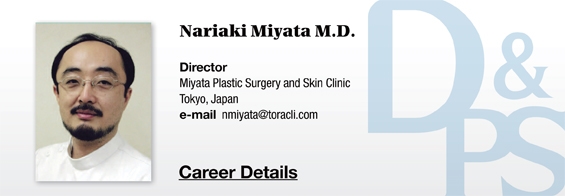
Devices used in beauty salons use the same mechanisms as medical devices but have very low efficacy levels to make them safer. Customers do not choose such procedures because of efficacy but because of misleading and aggressive advertising. These salons will make customers go into debt trying to pay for these costly procedures that provide little benefit.
One may think that this would drive people to seek medical professionals which are more reliable than beauty salons. But for some strange reason, consumers still prefer beauty salons. This may be because copies of globally famous aesthetic devices have become available. Especially, Korean, Chinese and Spanish devices are commonly found in these salons but they are not aware that using such devices is illegal. Medical institutions are trying to raise awareness of such unlawful practice and the Ministry of Health, Labour and Welfare are strengthening regulation but none of these salons are being penalized.
I hope that Korean manufacturers of medical devices do not take advantage of this loophole in Japan and try to create wrongful distribution channels. I believe that manufacturers are able to distinguish whether their buyers are medical institutions or non-medical businesses.
The beauty salon market easily dwarfs the aesthetic medical market. It may sound like a very attractive market for manufacturers as salons can use medical devices without regulation. However, any procedure that causes loss of adipocytes is legally categorized as medical.
On the other hand, a wide variety of devices are available ranging from non-invasive to invasive. Laser, that is irradiated on the skin in combination with liposuction, as well as laser sculpting, which inserts laser fibers with high absorption rate in water and fat into subcutaneous for fat removal, have been introduced and used in Japan. In my practice, I use a Korean device called Accusculpt. Due to its high absorption rate, the treatment can be time-consuming when performed on an extensive surface area. Therefore, I mainly use this device in facial fat reduction, rather than in body contouring. Devices with different ranges of wavelengths are also being introduced in Japan but I personally have not used them yet. This device is ideal for an adjunct treatment of liposuction and not as the primary treatment.
[Advertisement] FCR® (Fractional Prickle CoralCalcium Regentron) – Manufacturer: (www.illglobal.com)]
Treatments with low invasiveness include radiofrequency, ultrasound, and cryotherapy, etc. Body contouring procedures that use continuous RF devices such as Accent XL (Tenor) to mainly target cellulite have been introduced. However, this method had low efficacy. To enhance the efficacy, a new device such as Accent Ultra that combines RF with ultrasound has been developed. Accent Ultra was the most widely distributed device in the early days of body contouring in Japan. It uses RF and the shear wave of ultrasound to damage the membrane of the subcutaneous fat.




















